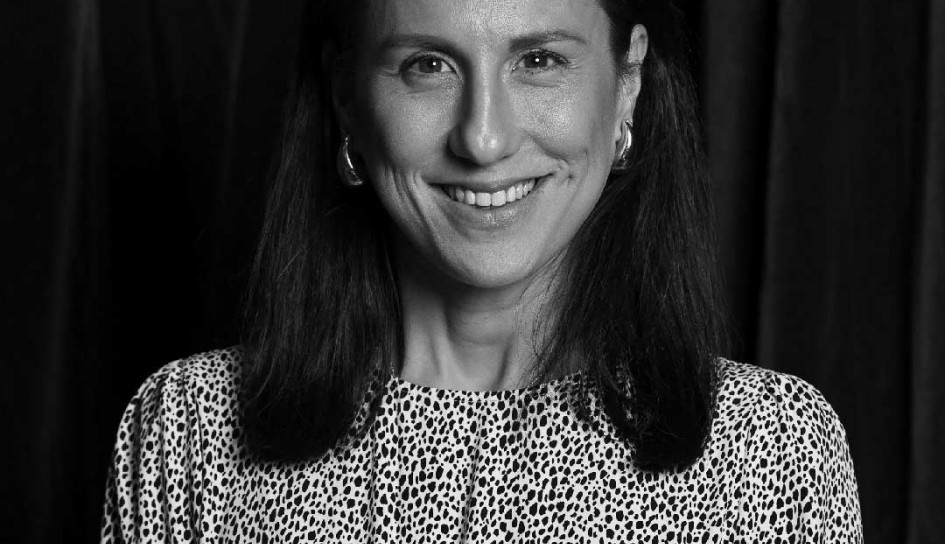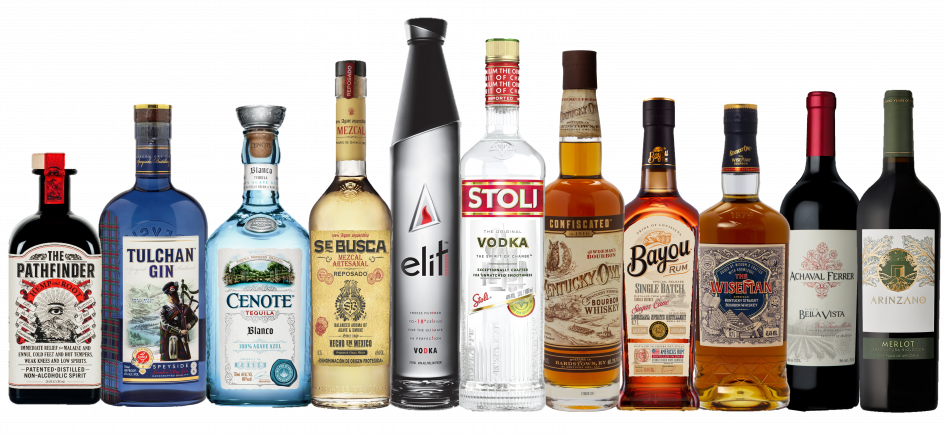From Consumption to Connection
With Kathryn Williams, Regional Sales Director for STOLI Group & Amber Beverage Group in IAPAC & Australia
Welcome to Eat Takeaway! In this series we hear from business, brand and marketing leaders on their ambitions and challenges this year and beyond. We explore their day-to-day and what lessons they have in the fast-changing and sometimes overwhelming worlds of brand experience and delivering for customers and employees. Check-out our takeaways at the end!

In this volume, our Senior Growth Manager Marshall Tory sits down with Kathryn Williams, Regional Sales Director at STOLI Group and Amber Beverage Group, to talk all things booze, brand, and breaking through in Asia. From premiumisation to purpose, Kathryn unpacks how today’s drinkers are changing – and what it takes to keep pace in one of the world’s most dynamic alcohol markets.
The 3 Key Quotes:
1. “People won’t love what they don’t understand. Clear, locally resonant storytelling is everything.”
2. “You can’t just adapt a tagline or tweak a poster. You have to eat, breathe, sleep Asia to understand it.”
3. “The younger generation might be drinking less, but they’re drinking better – and they want brands with personality and purpose.”
Marshall Tory: It’s such a pleasure to have you on our series, Kathryn. Thank you! First up, you’ve spent over a decade building brands in the region and held leadership roles across both marketing and sales in APAC. How has your experience in both those functions shaped your approach to building and growing brands in this region?
Kathryn Williams: It definitely shapes how you approach brand building. I think success rarely comes from just one function – you need both marketing and sales aligned. The brand story matters, but so does the reality of the market you’re selling into. Your great brand idea is only as good as the execution on the ground and the sales figures don’t lie – they tell you what’s working. You need to use that insight and make sure your brand strategy adapts but stays aligned to your goals.
In my experience, marketing and sales often operate in silos. They feel like they have different objectives, they don’t communicate as much as they should, and that’s a huge downfall. You end up with missed opportunities and inefficient spend. Finding alignment helps drive both brand awareness and volume.
MT: What’s unique about consumer expectations around premium spirits in APAC and Australia?
KW: Australia is a more developed spirits market with to consumers who care about the craft side, sustainability, and are more health conscious. But in Asia, it’s a very different picture. You’ve got a lot of emerging affluence, cultural diversity, and evolving social rituals that vary market to market. Premium in Asia often means an experience. It’s not just about price.
Here, premiumisation is being driven by the younger generation, buying an international spirit or a premium brand can be a subtle nod to your wealth or taste without being flashy. Gifting is also huge – and when people gift, they gift premium. It used to be whisky and cognac, but now it’s expanding into tequila and other spirits.

MT: So, younger drinkers have been engaging differently?
KW: Definitely. There’s been a big shift toward digital behaviours and a changing drinking culture. It’s not just about seeing a billboard or a football sponsorship and thinking a brand is cool. Now, young consumers want to actually engage with brands – often casually, and on their own terms.
They might follow a bartender online who introduces them to smaller, lesser-known brands. It’s about discovery through creators, not just through ads. And once they find something, they want to learn. They’ll watch cocktail tutorials, explore the brand’s story, maybe even buy a tasting set. It’s not just about drinking anymore – it’s about the experience, the learning, the story. That kind of engagement gives brands more authenticity and credibility.
That’s also tied into what we’re seeing with the cost of living crisis. People might not be drinking as much because they can’t afford it right now – but they’re still engaging. When they do choose to spend, they go for something special. It’s less about getting drunk and more about treating yourself to something premium. So even if consumption is down, interest and engagement are still very much there.
MT: STOLI and Amber Beverage Group have global ambitions, but you’re leading in one of the world’s most fragmented regions here in Asia. How do you balance global consistency with local market relevance?
KW: It’s one of the biggest challenges. For me, having a depth of understanding of your markets is essential. You have to live here, travel, eat and drink in each place – really understand what resonates. That’s why I travel so much. This month alone, I’m going to three different markets. Relationships matter here, and you need that local perspective.
Trying to explain that to HQs based in Europe or the US can be challenging. They often want to use the same strategy across Asia – just change the language. But that doesn’t work. You have to go beyond translation and understand what the message actually means to the local consumer.
We’ve also got dark markets in Asia where you can’t advertise, and countries with religious restrictions. So you have to be strategic. If you’ve got clear USPs, you can highlight different brand selling points depending on the market – sustainability in Australia, cocktail culture in Hong Kong, craft elements in Japan. It’s about flexing the brand story in the right way.
It’s not just about drinking anymore – it’s about the experience, the learning, the story.
MT: You’ve worked with challenger brands and global portfolios alike. What shifts when you’re building market love for a brand that isn’t yet a household name?
KW: The big difference is budget – that’s the obvious one. But beyond that, challenger brands don’t have the heritage or built-in awareness. You have to earn attention, build belief, and create momentum from scratch.
With a global brand, the focus is on consistency. You’re maintaining what already exists. With a challenger brand, it’s about making people realise you even exist – and doing it in a way that’s fun, creative, and local.
I think the best approach is to start small and go deep. Don’t try to reach everyone. Pick a target audience – find a moment, a type of venue, a specific crowd – and focus on building deep engagement there. It’s better to be loved by a few than vaguely noticed by many.
And the most important thing: get liquid on lips. If you’ve got a quality product, you should never be afraid of trial. As soon as someone tastes it, they get it. That’s how you turn curiosity into love.
MT: The spirits category is no stranger to brand-building – but in your view, what separates a brand people drink from a brand people love?
KW: A brand people drink is meeting a need – maybe you’re out at a bar, and it’s what’s available. But a brand people love is part of their identity. It reflects their values, their aspirations, their taste. There’s an emotional connection.
That’s why storytelling is so important, especially for premium brands. People want to know what a brand stands for. You can’t just make it pretty and expensive – you have to give people a real reason to connect. You need to be authentic and own your story. If you’re just trying to people-please or are constantly changing the narative, you end up with something insincere that doesn’t resonate deeply with anyone.
The most important thing: get liquid on lips. If you’ve got a quality product, you should never be afraid of trial.
MT: What’s a common misconception people have about building alcohol brands in this part of the world?
KW: That Asia is one market. It’s not. You can’t just tweak a poster and roll it out. You need to learn the local nuances, build relationships, respect cultural behaviours. What works in China won’t necessarily work in Korea or Vietnam or Australia.
Also, a lot of brands think China is the answer. But the reality is, most of the market volume is still Baijiu. Western spirits make up a very small slice – and it’s not easy to compete. You’re looking at complex regulations, pricing challenges, and distribution issues. If you’re not ready for that, it’s not going to work.
Even in markets like India, where local spirits dominate and international brands face a 300%+ tariff, you have to ask: why would a consumer pay triple for your product? That’s why local understanding, relevance, and strategy are so important.
MT: How has the role of on-trade partnerships (bars, restaurants, hotels) changed in your strategy post-pandemic?
KW: It’s changed a lot. Pre-pandemic, it was a numbers game – pouring rights, visibility, menu placement. But now it’s about deeper partnerships. The pandemic reminded everyone how fragile the hospitality ecosystem is, so there’s a stronger focus on collaboration.
We’re co-hosting events, doing limited-edition menus, building more meaningful moments. It’s about adding value – helping bars and restaurants build loyalty with their own customers. That means more premium offerings, more storytelling, and stronger brand alignment.
In India, for example, I visited bars that switched from local to international spirits. Yes, costs and therefore prices went up – but they found even more customers came and their revenue went up too, because consumers want to be associated with premium brands. It’s a win-win.
MT: And looking ahead, what are you most excited about in terms of where the industry – and your brands – are headed across APAC?
KW: For us, it’s great that premiumisation is accelerating. Consumers might be drinking a bit less, but they’re drinking better. They’re doing it across more occasions – hosting at home, joining tastings, attending to creative events.
There’s a rise in experience-led drinking culture. People want more than a good drink – they want a brand with personality, with purpose, with a story. That opens up huge opportunities for us to be more innovative in how we show up.
It’s a shift from consumption to connection. And that’s where the opportunity lies – building real, lasting relationships with consumers who care.
Asia is not one market – and shouldn’t be treated like one.
From gifting in North Asia to sustainability in Australia and live commerce in China, creating local nuance is everything. Flex your brand in the right way to match cultural tastes and meet emotional expectations of each unique market.
Challenger brands must start small and connect deep.
If you’re starting small, forget big splash campaigns – focus on emotional resonance, trial, and loyal communities. It’s better to be loved by few than vaguely known by many.
The post-pandemic drinker wants more than a drink.
Today’s consumers aren’t just drinking less—they’re drinking smarter. From on-trade partnerships to digital discovery, they are seeking to discover brands that can connect, not just sell, and these are the ones that are thriving.
If you enjoyed this piece, subscribe here to The Eat Digest - our monthly newsletter covering our latest insights, Japan brand and marketing news, and much more!